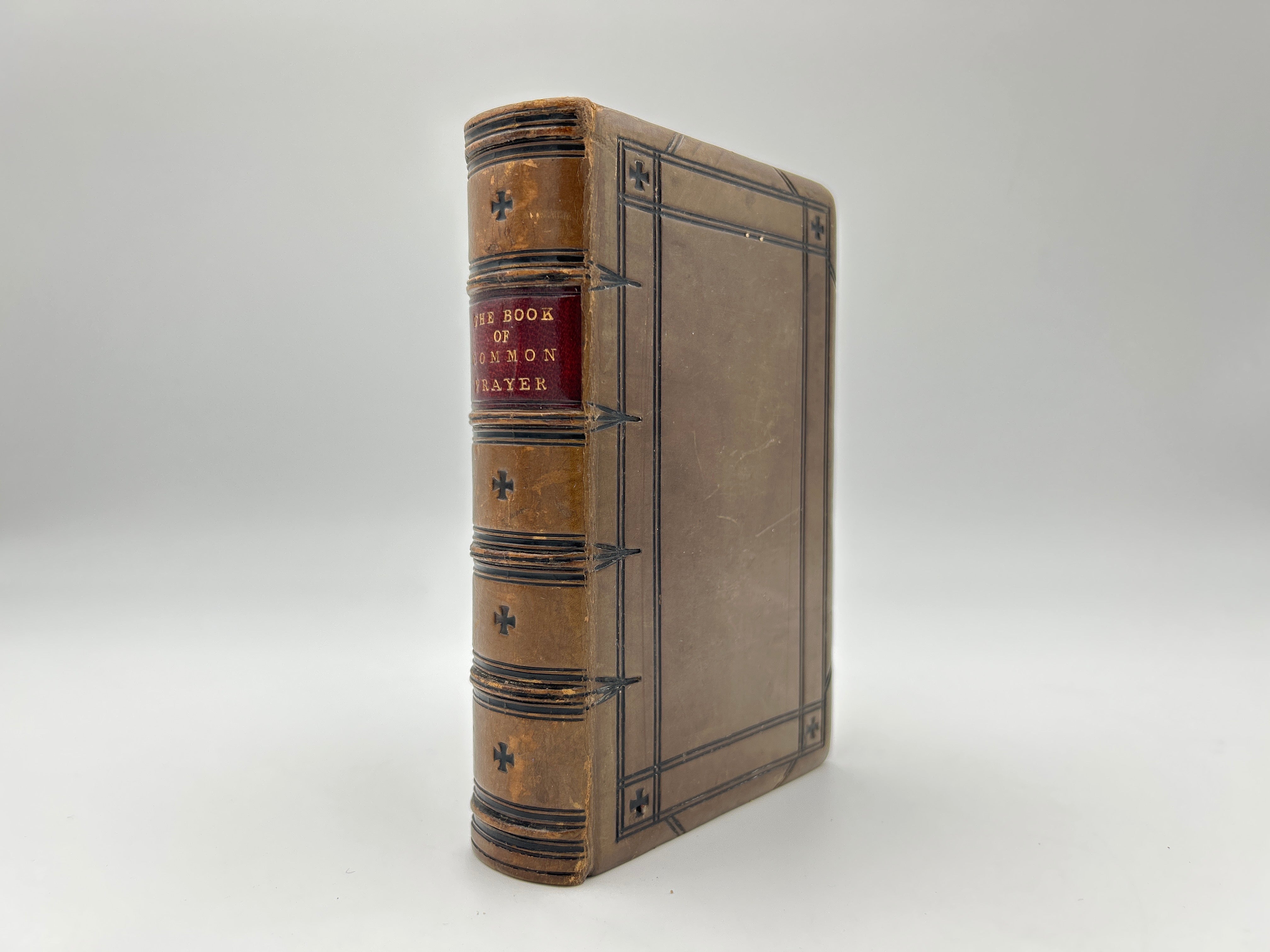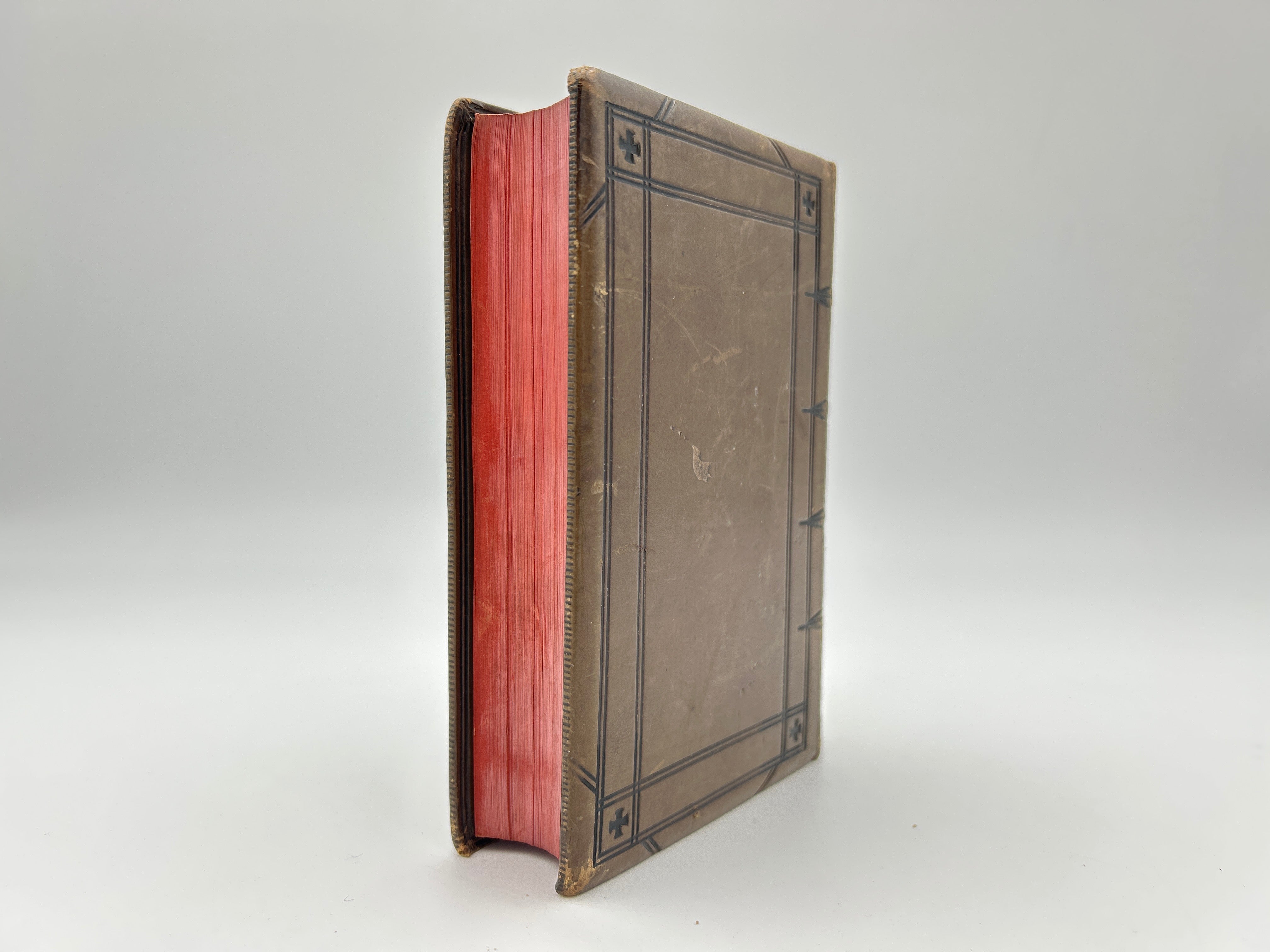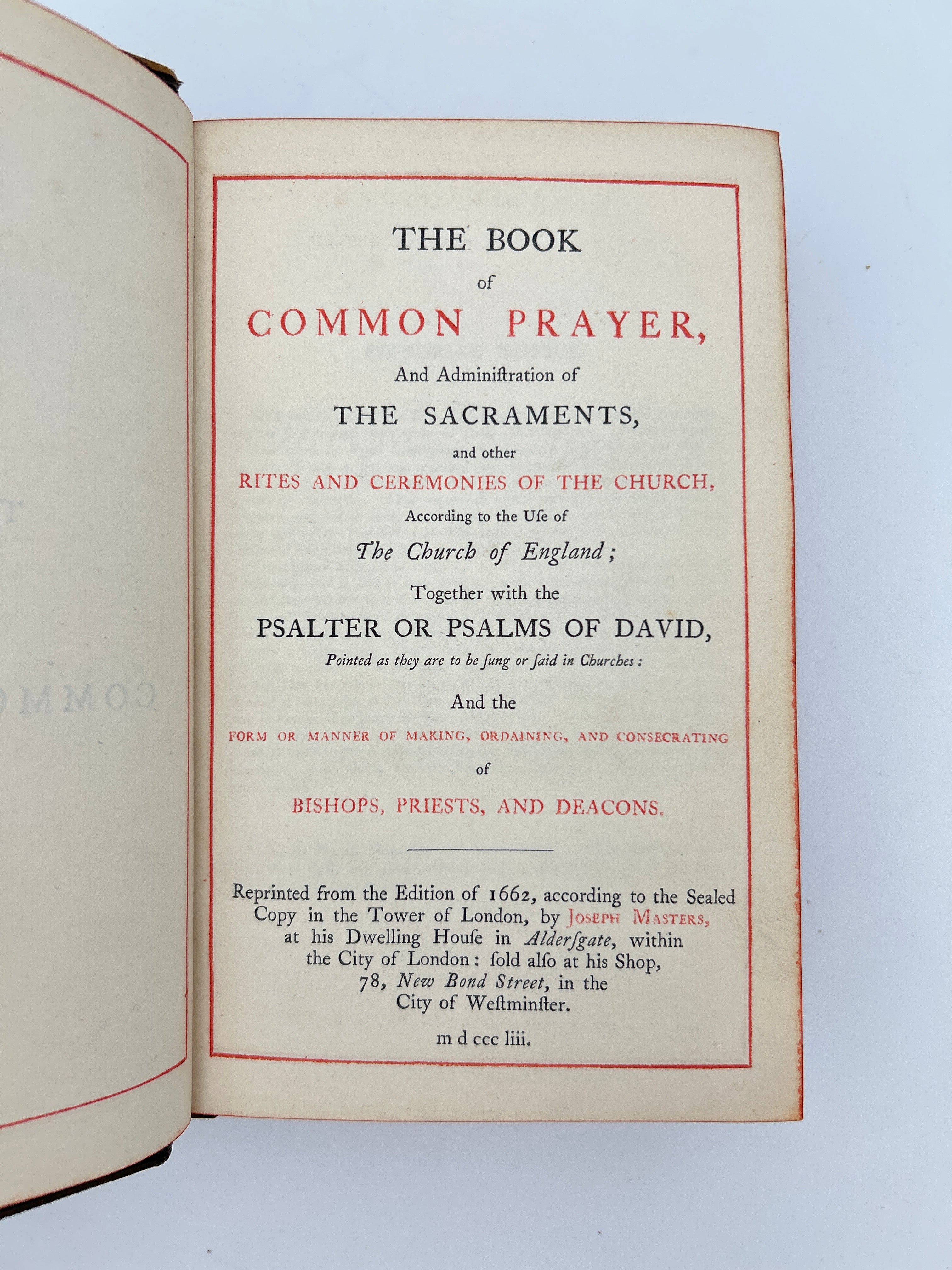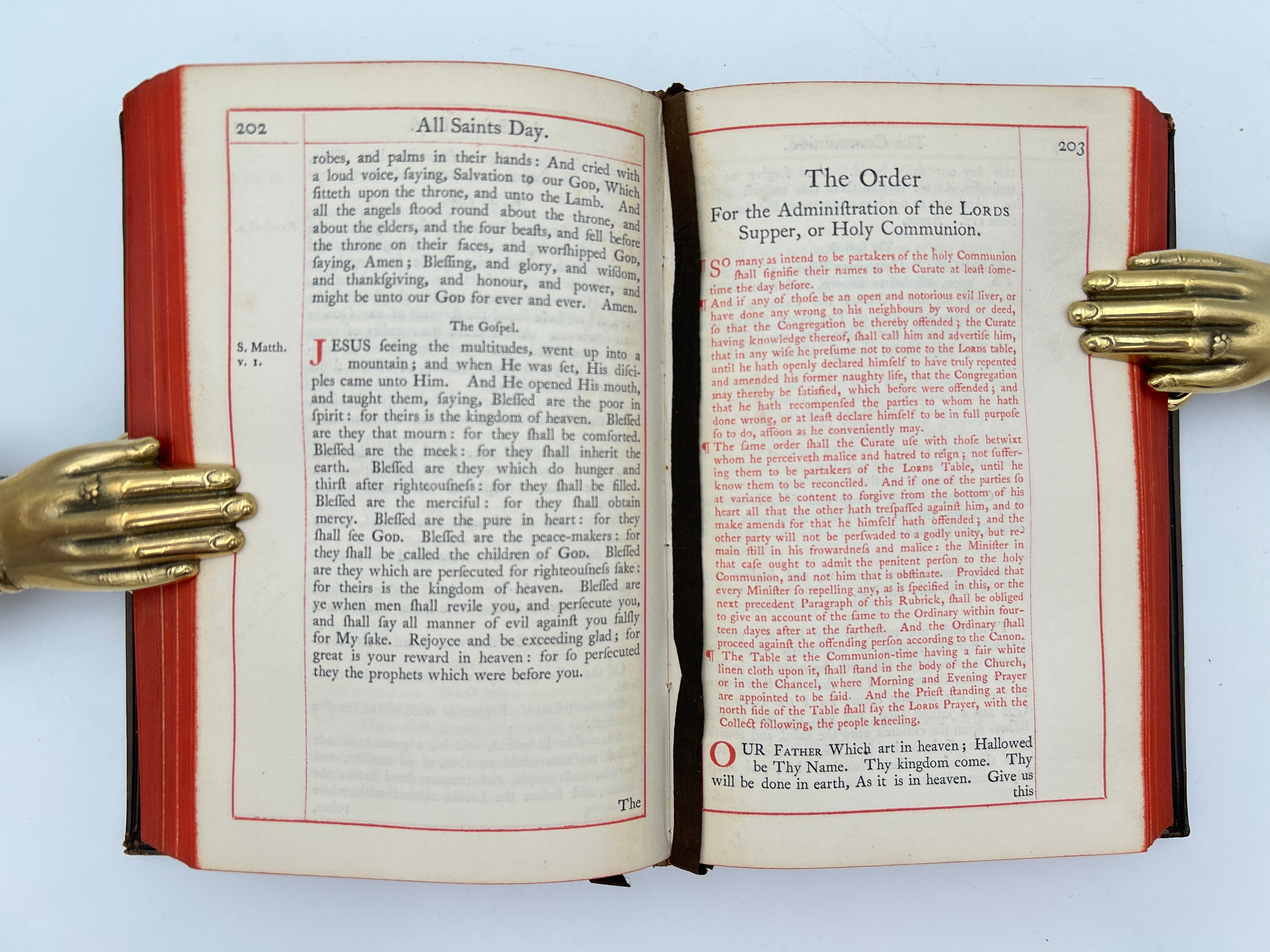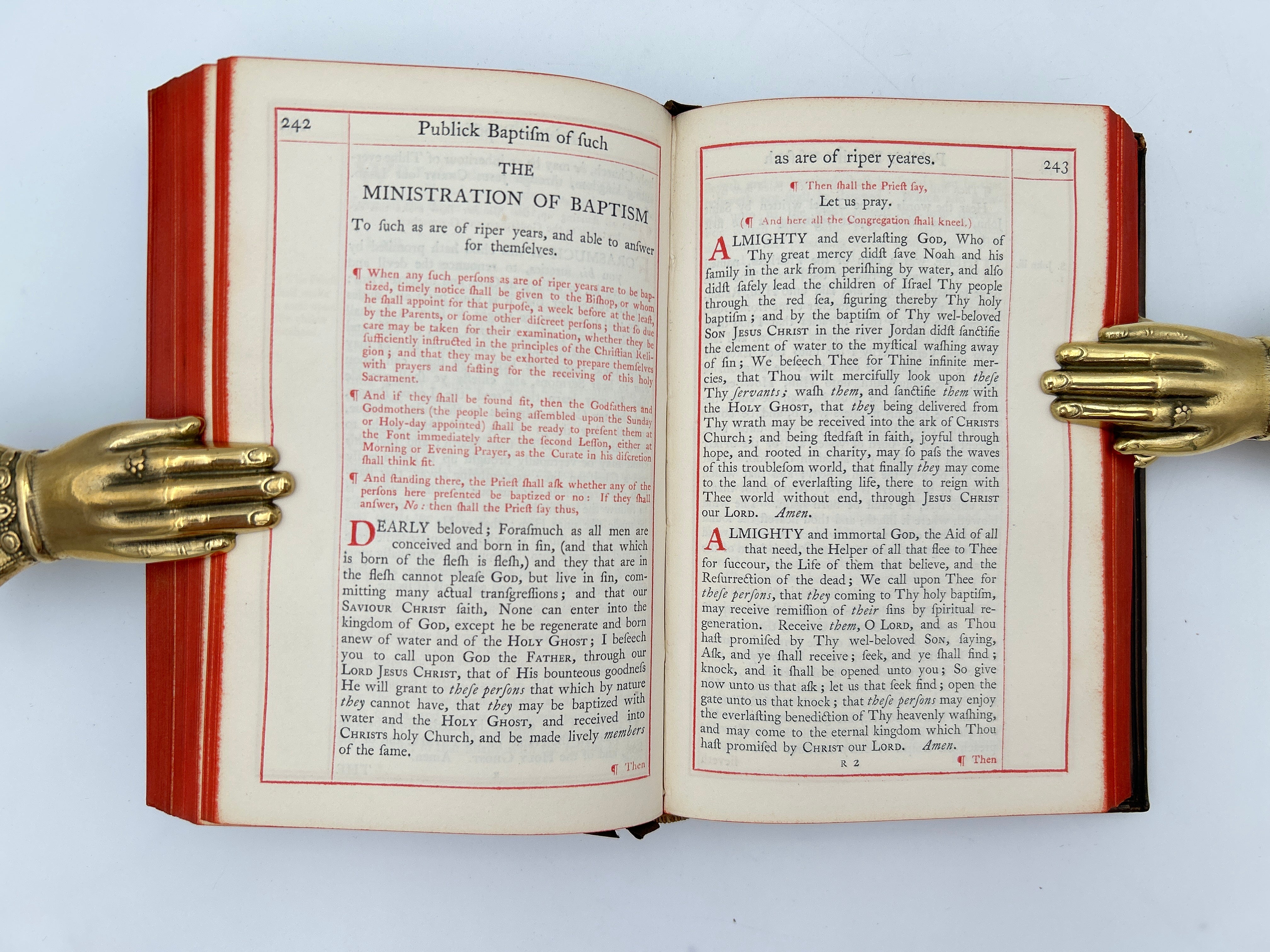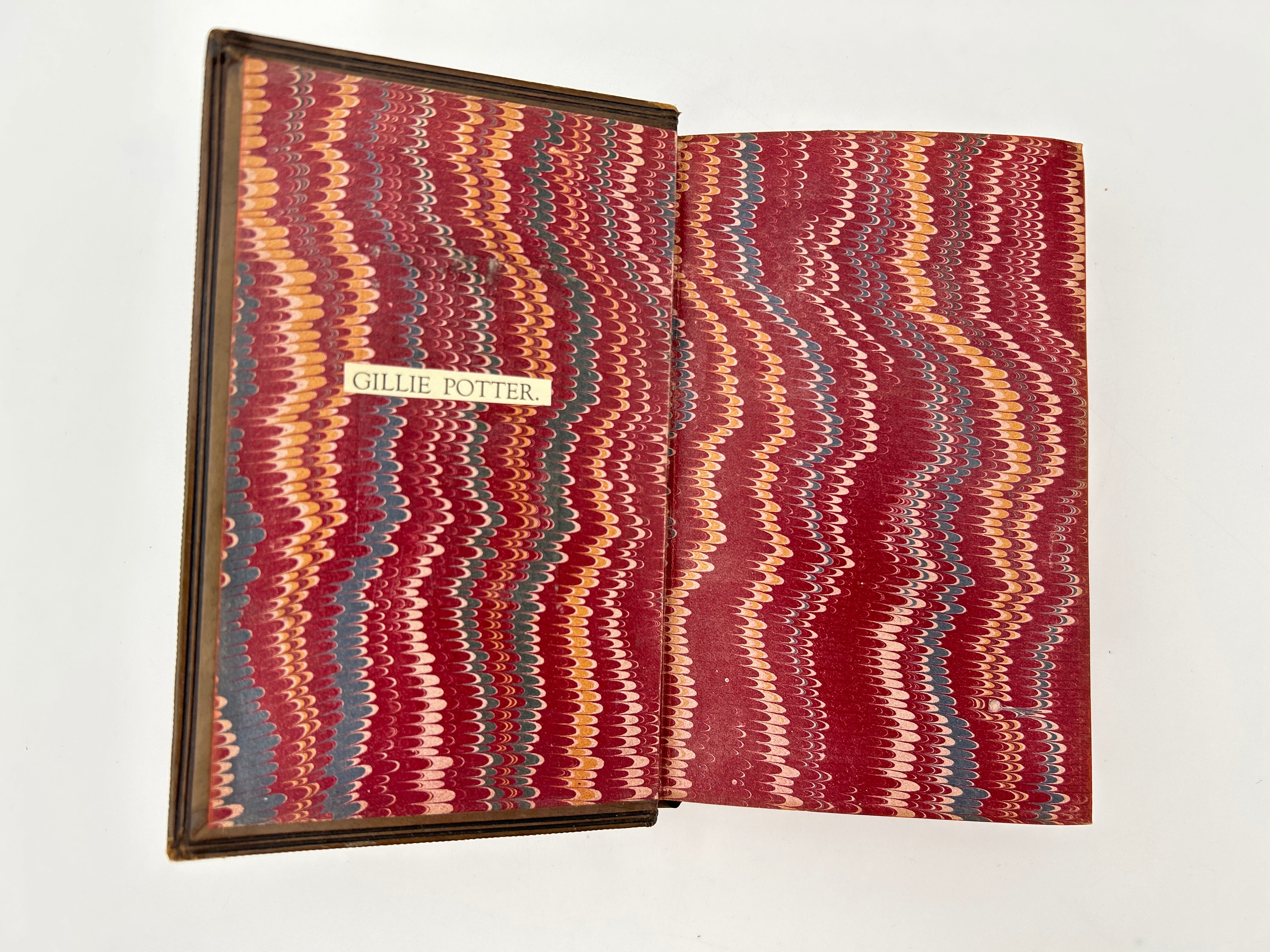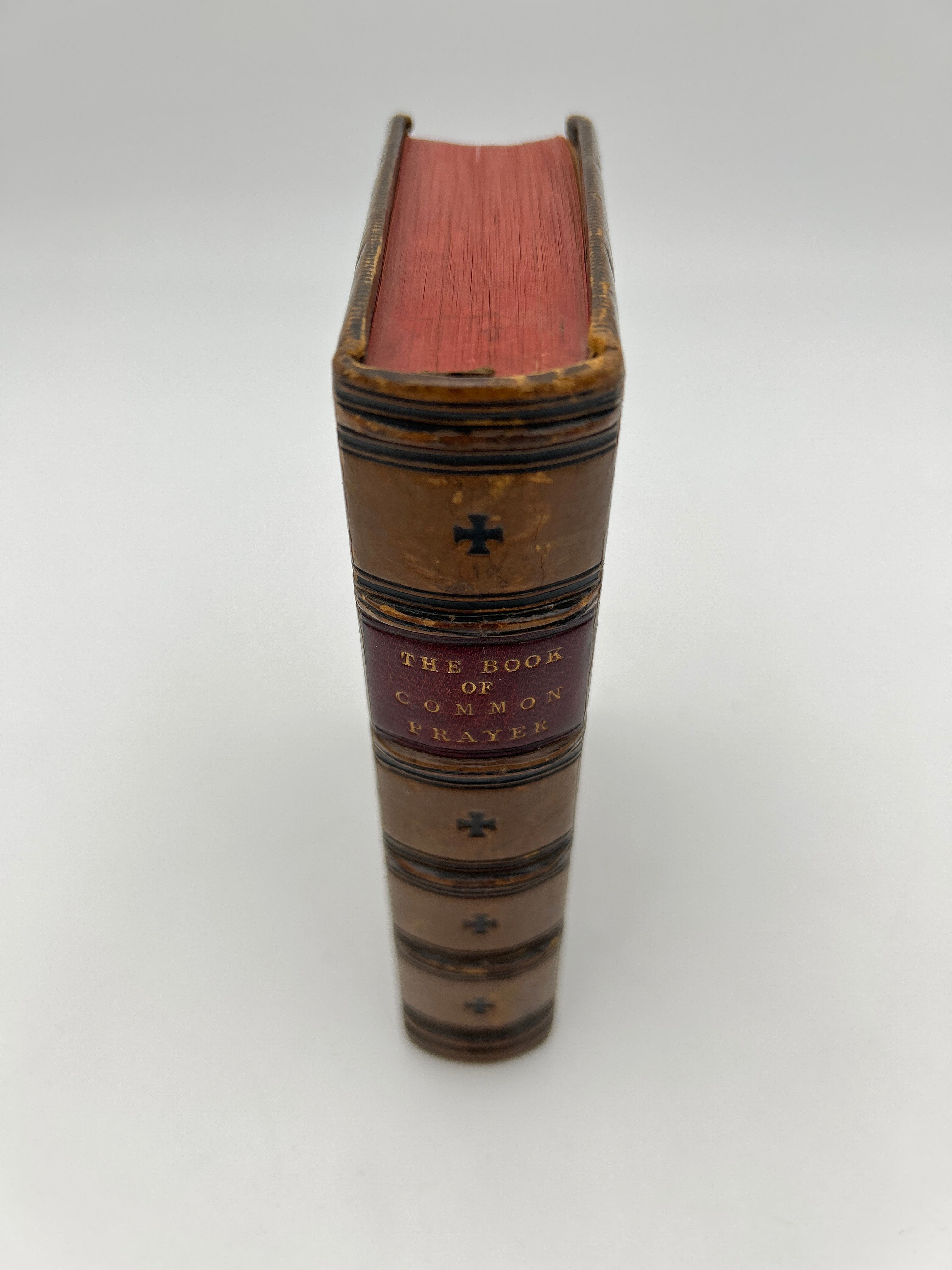Book of Common Prayer 1853
Pickup available at 4801 N University Avenue, Suite 340
Usually ready in 24 hours
5B London: Joseph Masters, 1853.
Notes
The Book of Common Prayer is a key liturgical text used in the Anglican tradition, first compiled in 1549 during the reign of King Edward VI in England. It was designed to standardize Christian worship across the English-speaking world, providing a unified structure for services such as the Eucharist, daily prayers, baptism, marriage, and funerals. The book’s most significant feature was its translation of the liturgy from Latin into English, allowing the wider population to engage in worship in their native language. This marked a major shift in religious practice and was an important moment in the English Reformation. Over the centuries, the Book of Common Prayer has undergone various revisions, but it has remained the foundation of Anglican worship, influencing not just church services but also the culture and language of English-speaking communities.
The Book of Common Prayer is renowned for its beautiful and poetic language, particularly in its prayers and hymns. Its structure and wording have influenced many aspects of Christian liturgical practices, as well as literature and the development of the English language. The book emphasizes a balance of formal, structured prayer and personal reflection, and it holds a place of great respect within Anglicanism, used not only in church services but also in private devotion. The Book of Common Prayer continues to be a central text in the worship and life of Anglican churches worldwide, embodying the theological principles and traditions of the Anglican Communion.
Description
Size: 6 3/4 x 4 1/2 x 1 1/2 inches
Full calf divinity or oxford binding, Inked raised bands, pallets, center tools to the panels and inked tooling to the boards. Pink edges. Red ruled throughout. Owner's name pasted to the end paper and written on the first blank. Marbled end papers. Contains the Sacraments and the Psalms of David. Slightly rubbed but still a charming example of this style. Very fine condition.
